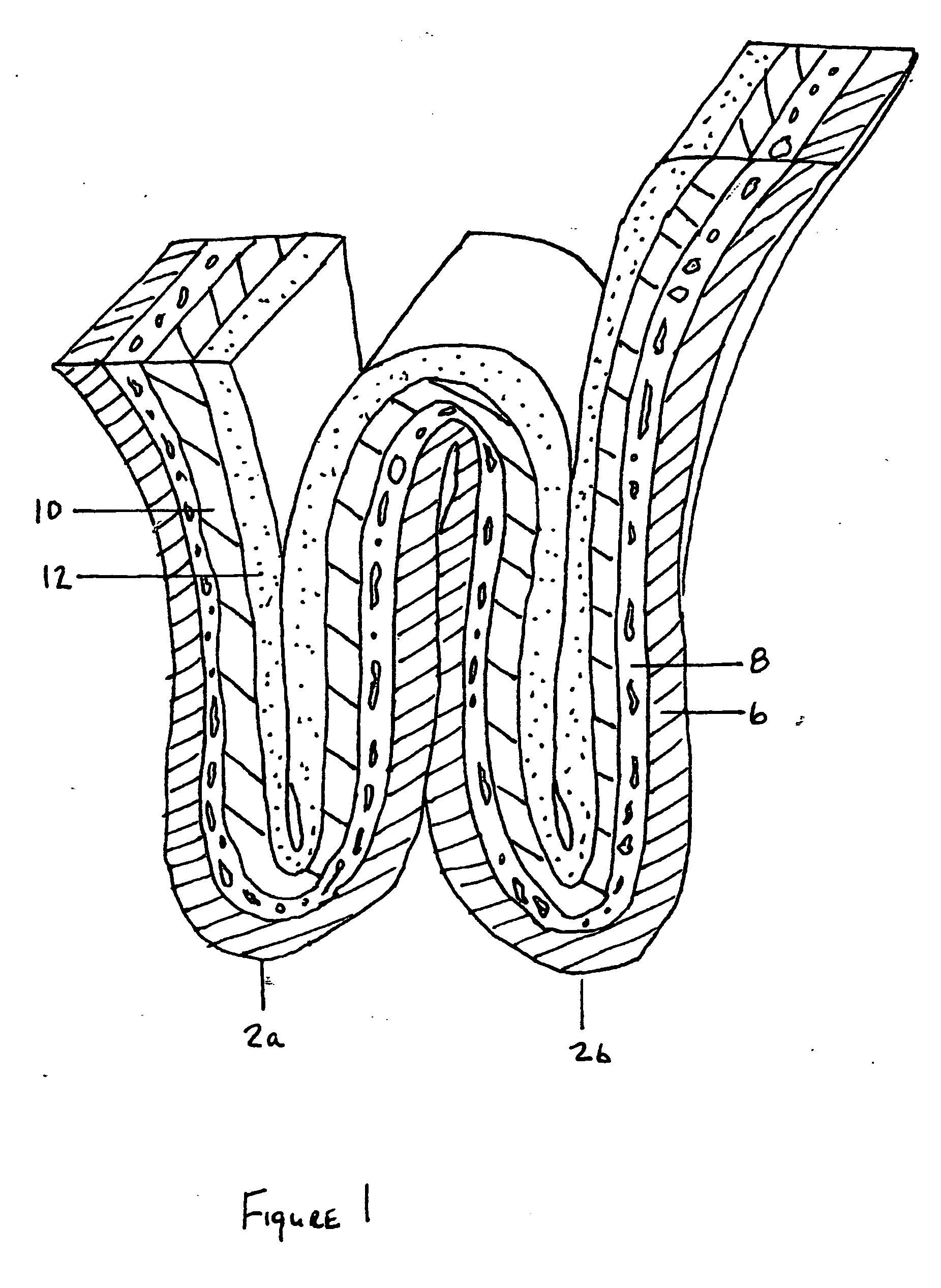Methods and apparatus for excising tissue and creating wall-to-wall adhesions from within an organ
- Summary
- Abstract
- Description
- Claims
- Application Information
AI Technical Summary
Benefits of technology
Problems solved by technology
Method used
Image
Examples
Embodiment Construction
[0026] As has been described, folds of soft tissue are brought together and clamped for many reasons. As an example, folds of tissue are brought together for the purpose of reducing the volume of the stomach or other such organs. In the treatment of obesity, a gastric partition can be created in the stomach wall to restrict the intake of food to a smaller gastric volume. In this technique, the walls of the stomach are brought together using endoscopic techniques and secured together. When this procedure is performed using multiple sequential attachments, the volume of the stomach can be significantly reduced. In the first step of this procedure, the walls of the stomach are folded and usually two folds are brought into close proximity with each other as shown in FIG. 1. In this illustration, a section of a stomach wall 1 been formed by bringing together two folds 2a and 2b of stomach tissue together. The folds are brought together such that the inner surfaces of the stomach wall are...
PUM
 Login to View More
Login to View More Abstract
Description
Claims
Application Information
 Login to View More
Login to View More - R&D
- Intellectual Property
- Life Sciences
- Materials
- Tech Scout
- Unparalleled Data Quality
- Higher Quality Content
- 60% Fewer Hallucinations
Browse by: Latest US Patents, China's latest patents, Technical Efficacy Thesaurus, Application Domain, Technology Topic, Popular Technical Reports.
© 2025 PatSnap. All rights reserved.Legal|Privacy policy|Modern Slavery Act Transparency Statement|Sitemap|About US| Contact US: help@patsnap.com



